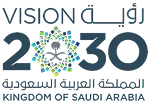Ever find yourself wondering if your hiring process is hitting the mark? That’s where recruitment metrics come into play they’re like the measuring tape for your hiring success. To really know what’s working and what needs improvement, you need to set measurable goals and keep an eye on key data.
Imagine it as a scorecard that guides you in making those game-changing hires. Having a solid grasp of overseas recruitment metrics is crucial in the ever-evolving landscape of hiring, ensuring you have the insights to fine-tune your strategy and land the best talent.
Understanding Key Hiring Numbers and How to Measure Them Right
It’s not just about counting resumes or job offers; it’s about understanding the story these numbers tell. Join me as we unravel the mysteries of key hiring metrics and learn the art of measuring them with precision. Ready to decode the language of recruitment data? Let’s embark on this insightful journey together!
1. Decoding Time to Fill: You’re Hiring Efficiency
Time to Fill is like a speedometer for hiring. It shows how quickly a recruiter can fill a job from the time they start looking for someone to the moment they bring them on board. Lots of things affect this speed, like where the job is, how well-known the company is, and the skills needed.
In simple terms, Time to Fill is the total number of days from when a job is announced to when the new person starts. This metric tells you how good the recruiter is at their job and how well the hiring process is working.
By looking at Time to Fill, you can find out three important things:
- When you find the right person for the job.
- How fast and well you hire when you find the right person.
- Any problems in your hiring process that slow things down.
Hiring the right people is super important for your company’s success. Using Time to fill helps you avoid mistakes and keep things running smoothly.

Image Source: aihr.com
2. Understanding Hiring Costs
Cost per Hire is like checking the price tag for bringing in new team members. It adds up all the costs from finding to welcoming a new person. For big companies, this cost is a big deal it affects the overall money picture. Moreover, for small companies, it can be the difference between a good or bad budget years.
This metric is linked to Time to Fill. Imagine it like this: the quicker you fill a job, the less money you spend on getting new talent. Fast hires mean a lower cost to bring in new team members.
3. Hire Quality Metrics
Quality of Hires is like checking if the people you choose to join your team stick around and do a great job. It’s measured by looking at the percentage of people who said yes to your job offer and stayed, divided by 2. This percentage shows how well the recruiting team is doing in finding awesome and loyal team members.
It’s about choosing the best from the bunch. This metric helps see if recruiters are using their time wisely to find top-notch talent or if they might be spending too much effort on the wrong candidates.
4. Track Your Sources: Understanding the Origin of Hires
This metric shows where most of your job candidates come from job boards, professional networks, agencies, or employee referrals Metrics. Tracking software breaks down the number of applications from each source, revealing how many candidates were shortlisted, selected, and joined.
Use this info to focus on the best sources and stop using ones that do not work well. It helps recruiters plan and budget for recruitment agencies for Bahrain in Pakistan, aiming for the best results.
5. Offer Success: Analyzing Job Acceptance Rates
This metric compares the number of candidates offered a job to those who accept it. If not many accept, your job offer might not be competitive. Rethink things like salary, benefits, or growth opportunities to make your offer more appealing.
If salary is the issue and you cannot offer more, think about other benefits like flexible hours, free food, or work-from-home options.
6. Retention Check: Managing Employee Turnover Rates
A high attrition rate is expensive because replacing an employee can cost a lot as Metrics , especially for skilled roles. If many people are leaving, check if your job description is misleading or attracting less committed candidates.
If you are hiring a lot because people are leaving, figure out why and improve your hiring process. Get creative with job descriptions or improve onboarding to make sure new hires stick around.
7. Positive Candidate Experience: Keeping Applicants Happy and Engaged
Most candidates feel good when they get timely updates during the job application process. Around 80% say one bad experience can change their decision, even at the last minute. Making sure every candidate feels valued and informed increases satisfaction and keeps them interested in your opportunity.
8. Prioritizing Diversity in Hiring: Beyond Legal Compliance
Diversity in hiring is not just a legal thing—it’s essential. Laws prevent discrimination based on various factors. But beyond that, having a diverse team brings benefits like lower turnover and more innovation.
9. Measuring Recruiting Success: Candidate Call Back Rate
This metric shows how successful your recruiting efforts are. It looks at how many candidates return your calls or messages after you reached out to them. The formula for the call back rate is:
Call Back Rate % = Total number of candidate outreach attempts/Number of candidate return phone calls
10. Applicants per Opening:
Indicates the job’s popularity based on the number of applicants. High numbers do not always mean many suitable candidates. It could show high demand or a too-general job description. Narrowing the description can reduce applicants without losing good candidates.
11. Hiring Manager Satisfaction:
A happy hiring manager means the new hire is doing well and fits the team. It’s a key indicator of a successful hire.
12. Offer Acceptance Rate:
- Measures how many candidates accepted the job out of those offered.
- The formula is OA=Number of offers accepted/Number of offers made.
- A low acceptance may suggest not offering competitive pay.
- Discussing pay earlier can avoid rejected offers.
13. Selection Ratio Metrics:
The selection ratio, or submittals to hire ratio, is a way of understanding how many candidates were hired compared to the total number of candidates. This metric gives insights into the effectiveness of our recruitment tools and assessments, providing valuable information about our selection process and the overall recruitment system.
14. Workforce Dynamics: Assessing the Percentage of Open Positions:
- This metric involves comparing the total number of open positions within specific departments or the entire organization to the overall number of available positions.
- A high percentage indicates either a low supply of people in the labor market for those roles or a high demand for those positions.
- It serves as a useful indicator for workforce planning and understanding market dynamics.
15. Recruitment Funnel Effectiveness Metrics:
The recruitment process comprises various stages, akin to a funnel. Evaluating the effectiveness of each step allows us to determine the success rate at every stage. This helps in refining the recruitment strategy and enhancing the overall efficiency of the hiring process.

Image Source: manatal.com
Building a Strong Talent Pool: Nine Easy Steps
- Identify Important Roles:
- Begin by determining the crucial roles that your organization needs. It’s crucial to understand which positions are vital for the growth and success of the company.
Before diving into the hiring process, carefully analyze and confirm the importance of these roles to ensure effective recruitment efforts.
- Begin by determining the crucial roles that your organization needs. It’s crucial to understand which positions are vital for the growth and success of the company.
- Assess Talent Inventory:
- Recognize and understand the necessary skills for various roles within your organization. Identifying the key competencies required for each position is essential.
Assessing the talent inventory not only helps in understanding the current skill landscape but also aids in better task allocation when building a robust team.
- Recognize and understand the necessary skills for various roles within your organization. Identifying the key competencies required for each position is essential.
- Determine Talent Mix for Gaps:
- Establish what kind of talent mix is needed to fill the existing gaps within the organization. This step involves understanding the specific skills and expertise required to address the current needs of the company.
Having a clear vision of the talent mix allows for targeted recruitment efforts to meet the organizational requirements.
- Establish what kind of talent mix is needed to fill the existing gaps within the organization. This step involves understanding the specific skills and expertise required to address the current needs of the company.
- Define Internal Candidate Pool:
- Recognize the skill sets present within your internal candidates. Identify individuals with competencies that align with critical roles within the company.
Assign or reassign roles based on the competencies of internal candidates, aiming to utilize and develop their skills. Assess the strengths and weaknesses of the internal talent pool and work towards enhancing their capabilities to fulfill diverse roles.
- Recognize the skill sets present within your internal candidates. Identify individuals with competencies that align with critical roles within the company.
- Track Promotion and Turnover Rates:
- Monitoring promotion and turnover rates provides insights into the effectiveness of talent development programs and opportunities for career growth.
- Lower-than-expected rates may indicate a need to revise and improve development initiatives. Higher-than-expected rates require a careful analysis of the approach to creating opportunities, especially in critical positions.
- Execute Candidate Engagement Campaigns:
- Create and identify opportunities for interaction and engagement with potential candidates. Consider participating in conferences, leveraging social networks, and collaborating with different hiring managers and employees.
- Strengthening professional relationships through engagement campaigns helps in building a positive employer brand and attracting top talent.
- Assess and Refine Sourcing Strategies:
- Evaluate the success of past sourcing strategies in acquiring quality talent. Identify sources that have proven effective in the past.
- Explore new connections and sources through keywords, ideal profiles, and industry trends to stay current and innovative in talent acquisition.
- Track Overall Pool Size and Quality:
- Consider both internal and external talent pool databases to get a comprehensive view of the available talent.
- Tracking the size and quality of the talent pool helps in understanding the organization’s needs, ensuring a strategic and targeted approach to recruitment.
- Enhance Hiring Decisions with an ATS:
- Utilize an Applicant Tracking System (ATS) to generate accurate reports on daily operations and analyze performance based on customized recruiting metrics.
- The ATS provides valuable insights into the recruitment process, enabling informed decisions and continuous improvement in hiring strategies.
Discover the complete set of HR reports from Delta International Recruitment Agency designed to keep you in control of your hiring process. Begin your journey with a free trial today, allowing you to monitor performance indicators at each step. Use this opportunity to refine your strategies continually, aiming for future success through ongoing improvement.




























